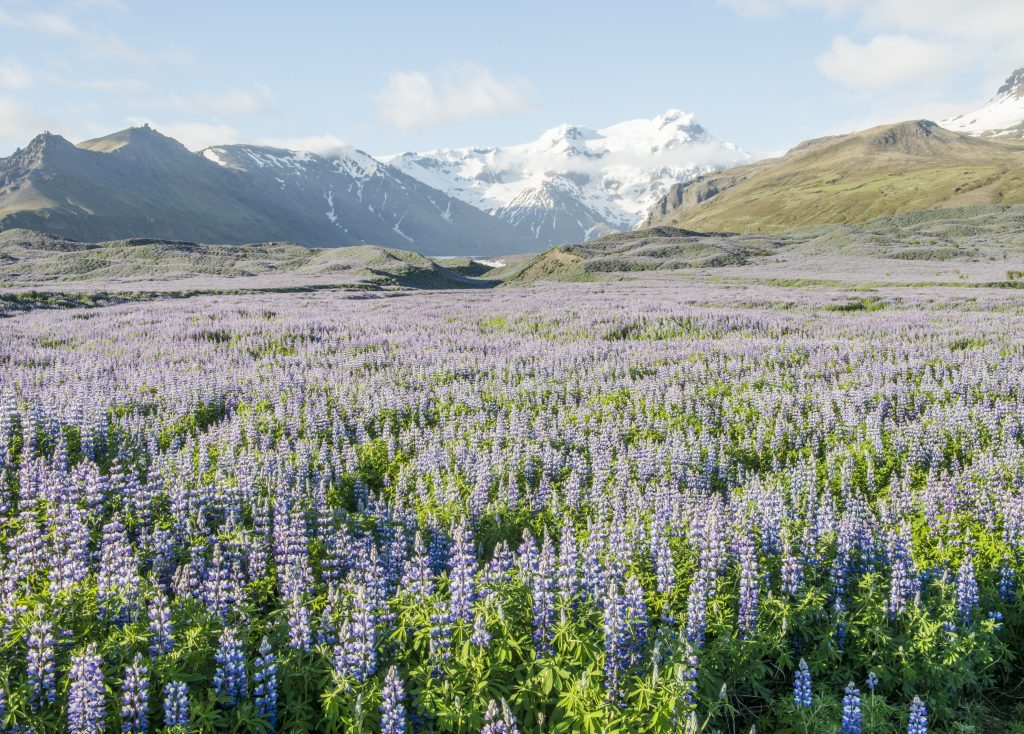Invasive species are still rare in the Arctic — but that could soon change
Environmental and economic changes could make it easier for non-native plants and animals to gain a foothold in the North.

The best-known instance of invasive species in the Arctic is perhaps the red king crab: In the 1960s, the Soviet Union, seeking to increase the “productivity” of the Barents Sea, began a program of releasing the species, a native of the Pacific Ocean, into the waters off the Kola Peninsula.
Aside from this egregious example, incidents of non-native species of plant or animal establishing themselves in the region, intentionally or otherwise, are few when compared with other parts of the world. In 2013, CAFF, an Arctic Council working group, estimated there were less than 20 in all.
New research suggests this remains the case, but it also warns that impending temperature rises in the region, and its increasing economic ties to other parts of the world, could open the door to an influx of species, threatening populations of native plant and animal life through increased competition and exposure to new forms of illness.
The risk, according to scientists with NINA, the Norwegian organization that led the study, is particularly great in maritime and coastal environments.
The results, based on surveys of plant and animal life on Svalbard and Jan Mayen and the surrounding waters, confirm the findings of previous research, particularly when it comes to the risk from shipping. A 2015 paper, for example, indicated that non-native species are routinely introduced into Svalbard waters in the ballast water discharged from ships.
For now, though, this is a problem waiting to happen. The ballast-water release was found to do little damage, since species transported from temperate climates are normally not able survive in the waters around the archipelago. As waters in the region warm, they will be more likely to survive.
Regulations governing the release of ballast water, which took effect last year, should stop some species from inadvertently being introduced in the first place, but the rules will do little to keep out those that arrive on ships’ hulls, attached to the increasing volumes of maritime pollution reaching the region or on other animals.
On land, the findings suggest there is less risk of species establishing themselves than at sea, though they stress that efforts to control plant and animal life need to be kept up. For the species that have established themselves, eradication programs have shown mixed results. On Svalbard, for example, cow parsley, deemed to be a “high risk” species in 2012, is now almost completely wiped out. Iceland, though, continues to battle the Nootka lupine, a flowering plant imported from Alaska to control erosion that has now spread to almost all of the island, as well as to Greenland.
The survey found only few forms of non-native animal life, and noted that some intentionally introduced species, including musk oxen, hare and mink, had been eradicated. Of those that remain, the most noteworthy is the sibling vole, a mouse-like mammal believed to have arrived in settlements in the 1920s, and which has now spread to wild areas. Their presence, as well as evidence that rats and mice can be found to some extent, serves as a warning that human activity may unintentionally bring new species with them.
The same warning applies to animals showing up in the region on their own. The report suggests that newly observed species be monitored, both as possible threats as well as possible carriers of harmful viruses or parasites.
Preventing and eradicating alien species in water is much more challenging. Instead, the report recommends allowing continued monitoring to serve as the basis for improved control – in effect, finding a way to live with the newcomers. Some species, though an environmental burden, it turns out, can even have an economic upside.
Warmer water in the far North Atlantic, for example, means that mackerel, one of Europe’s most valuable species of fish, is now easily reachable by Greenlandic fishermen. They also report landing bluefin tuna. Depending on their size, such fish can fetch tens or even hundreds of thousands of dollars apiece.
The red king crab places Norway and Russia in a similar dilemma. Its release has already spread environmental catastrophe from the Kola Peninsula to the coast of northern Norway, and is now moving north and south. But the crabs are a highly valued catch, and the full impact of their spread has yet to fully be identified, which has resulted in the two countries seeking to manage their populations. Their attitude towards invasive species, it would appear, is don’t worry, be crabby.